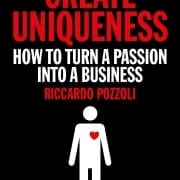The Big Picture of Business- When the Rules Don’t Fit the Game, Corporate Cultures Reflect Business Progress and Growth
Every business, company or organization goes through cycles in its evolution. At any point, each program or business unit is in a different phase from the others. Every astute organization assesses the status of each branch on its Business Tree™ and orients its management and team members to meet constant changes and fluctuations.
It’s not that some organizations ‘click’ and others do not. Multiple factors cause momentum, or the lack thereof. As companies operate, all make honest and predictable mistakes. Those with a willingness to learn from the mistakes and pursue growth will be successful. Others will remain stuck in frames of mind that set themselves up for the next round of defeat or, at best, partial-success.
The saddest fact is that businesses do not always know that they’re doing anything wrong. They do not realize that a Big Picture must exist or what it could look like. They have not been taught or challenged on how to craft a Big Picture. Managers, by default, see ‘band-aid surgery’ as the only remedy for problems… but only when problems are so evident as to require action.
Is it any wonder that organizations stray off course? Perhaps no course was ever charted. Perhaps the order of business was to put out fires as they arose, rather than practicing preventive safety on the kindling organization. That’s how Business Trees in the forest burn.
This chapter studies obsolete management styles and corporate cultures that exist in the minds of out-of-touch management. Reliance upon many of these management tenets subsequently brought Enron and many others down.
This includes the characteristics of addictive organizations, their processes, promises and forms. It reviews the Addictive System, the company way and the organization as an addict. This chapter studies communications, thinking processes, management processes, self-inflicted crises and structural components of companies that go bad, or maybe never do what it takes to be good. Topics discussed include the society that produced business scandals, accountants and auditors, pedestals upon which CEOs are placed, spin doctoring, compensations and accountability issues with managers.
Companies are collections of individuals who possess fatal flaws of thinking. They come from different backgrounds and are products of a pop culture that puts its priorities and glories in the wrong places… a society that worships flash-and-sizzle over substance.
Characteristics of Corporate Arrogance:
- Support others who are like-minded to themselves.
- Scapegoat people who are the messengers of change.
- Blame others who cannot or will not defend themselves.
- Find public and vocal ways of placing blame upon others.
- Shame those people who make them accountable.
- Neither attends to details nor to pursue a Big Picture.
- Perpetuate co-dependencies.
- Selectively forgets the good that occurs.
- Find three wrongs for every right.
- Do little or nothing.
- At all costs, fight change… in every shape, form or concept.
- Making the wrong choices.
- Inability to listen. Refusal to hear what is said.
- Stubbornness.
- Listening to the wrong people.
- Failure to change. Fear of change.
- Comfort level with institutional mediocrity.
- Setting one’s self up for failure.
- Pride.
- Avoidance of responsibilities.
- Blaming and scapegoating others.
- People who filter out the truths.
- Non-risk-taking mode.
- Inaccessibility to independent thinkers.
- Calling something a tradition, when it really means refusal to change.
- Pretense.
- Worshipping false idols, employing artificial solutions.
- Preoccupation with deals, rather than running an ongoing business.
- Arrogant attitudes.
- Ignorance of modern management styles and societal concerns.
- Failure to benchmark results and accomplishments.
Incorrect Assumptions that People Make:
- That wealth and success cure all ills.
- That business runs on data. That data projects the future.
- That data infrastructure hardware will navigate the business destiny and success.
- That all athletes are role models. That all well-paid athletes are national heroes.
- That the CEO can make or break the company single-handedly.
- That doctors don’t have to be accountable to their customers.
- That education stops after the last college degree received.
- That TV newscasters are celebrities and community leaders.
- That having an E-mail address or a website makes one an expert on technology.
- That the Internet is primarily an educational resource.
- That technology is the most important driving force in business and society.
- That buying the latest software program will cure all social ills and create success.
- That community stewardship applies to other people and does not require our own investment of time.
- That white-collar crime pays and that highly paid executives will avoid jail time.
- That senior corporate managers have all the answers and do not need to seek counsel.
- That return on shareholder investment is the only true measure of a company’s worth.
- That all people who grew up in the south are racist.
- That government bureaucrats are qualified to make decisions about taxpayer money.
- That activists for one cause are equally open-minded about other issues.
- That corporate mid-managers with expense accounts are community leaders.
- That deregulation is always desirable and in the public’s best interest.
- That home-based businesses are more wealth-producing than holding a job.
- That professionals can get by without developing public speaking and writing skills.
Addictive Organizations.
Addictive organizations are predicated upon maintaining a closed system. Alternately, they are marked by such traits as confusion, dishonesty and perfectionism. They are scarcity models, based upon quantity and the illusion of control. Only the high performers get the gold because there are not enough bonuses to go around. Addictive organizations show frozen feelings and ethical deterioration.
Addictive organizations dangle ‘the promise’ to employees, customers, stockholders and others affected. People are lured into doing things that enable the addictive management’s pseudopodic ego.
All that is different is either absorbed or purged. The addictive organization fabricates personality conflicts in order to keep people on the edge all the time. There exists a dualism of identifying the rightness of the choice and a co-dependence upon the rewards of the promise.
In such companies, the key person is an addict. The CEO and his chosen lieutenants have taken addictions with them from other organizations. The organization itself is an addictive substance, as well as being an addict to others. They numb people down and addict them to workaholism.
The addictive system views everything as ‘the company way.’ The entity is outwardly one big happy family. It is big and grandiose. The emphasis is upon the latest slogans of mission but does not look closely at how its systems operate. The term ‘mission’ is a buffer, excuse, putdown and roadblock.
Rather than embrace the kinds of Big Picture strategies advocated in this book, the addictive system seeks artificial fixes to organizational problems, such as bonuses, benefits, slogans and promotions of like-minded executives.
Communications are always indirect, vague, written and confusing. People are purposefully left out of touch or are summarily put down for not co-depending. Secrets, gossip and triangulation persist, as a result. The addictive organization does communicate directly with the news media and often adopts a ‘no comment’ policy. Company officers (who should be accessible to media) are cloistered and unavailable. The addictive organization does not recognize that professional corporate communications are among the best resources in their potential arsenal.
The addictive system does not encourage managers to develop thinking and reasoning processes. The system portrays forgetfulness, selective memory and distorted facts into sweeping generalizations. We are expected to take them at their word, without requesting or demanding facts to justify.
In the addictive organization, those who challenge, blow whistles or suggest that things might be better handled are neither wanted nor tolerated. Addictive managers project externally originated criticism back onto internal scapegoats. There is always a strategy of people to blame and sins to be attributed to them.
Management processes tend to exemplify denial, dishonesty, isolation, self-centeredness, judgmentalism and a false sense of perfectionism. Intelligent people know that perfectionism does not exist and the quest for quality and excellence is the real game of life and business. Addictive organizations do not use terms like ‘quality’ and ‘excellence’ because such terms must be measured, periodically reexamined and communicated… the organization does not want any of that to occur.
There persists a crisis orientation, meaning that everything is down to the wire on deadlines (not to be confused with just-in-time delivery, which is a good concept). Things are kept perennially in turmoil, in order to keep people guessing or confused. Management seduces employees into setting up competing sides in bogus feuds and manipulating consumers.
Structural components include preserving the status quo, fostering political games, taking false measurements and pursuing activities that are incongruent with the organization’s announced mission.
7 Layers of Organizational Addictiveness.
Companies that Go Bad…self-inflicted Crises.
- Self Destructive Intelligence. There exists a logic override. Since the company does not believe itself to be smart enough to do the right things, then it creates a web of rationalism. Since the mind often plays tricks on itself, management capitalizes upon that phenomenon with people who may question or criticize.
- Hubris. This quality destroys those who possess it. Such executives exhibit stubborn pride, believing their own spin doctoring and surrounding themselves with people who spin quite well on their behalf. They adopt a ‘nobody does it as well as we can’ mentality. Such companies scorn connections, collaborations and partnering with other organizations.
- Arrogance. Omnipotent fantasies cause management to go too far. The feeling is that nothing is beyond their capacity to succeed (defined in their minds as crushing all other competition).
- Narcissism. Company executives possess excessive conceit. They are disconnected from outside forces, self-centered and show a cruel indifference to others. The view is that the world must gratify them.
- Unconscious Need to Fail. These companies try too hard to keep on winning. With victory as the only possible end game, all others must be defeated along the way. In reality, these people and, thus, their organizations, possess low self-esteem. Inevitably, they get beaten at their own games.
- Feeling of Entitlement. Walls and filters have been established which insulate top management from criticism (which is viewed as harming the chain of armor, rather than as potentially constructive). Anger stimulates many of their decisions. The feeling is that they deserve it all. Power satisfies appetites. These executives have poor human relations skills. They believe that excesses are always justified.
- Collective Dumbness. Such organizations have totally reshaped reality to their own viewpoints. The emperor really has no clothes, but everyone overlooks the obvious and avoids addressing it forthrightly. The organization dumbs down the overall intelligence level, so that people are in the dark and cannot readily make judgment calls. Cults of expertise function in vacuums within the company. Neurotic departmental units do not interface often with others. Employees are slaves of the system. There exists total justification for what is done and an ostrich effect toward calls for accountability.
7 Defeating Signs for Growth Companies:
- Systems are not in place to handle rapid growth, perhaps never were.
- Their only interest is in booking more new business, rather than taking care of what they’ve already got.
- Management is relying upon financial people as the primary source of advice, while ignoring the rest of the picture (90%).
- Team empowerment suffers. Morale is low or uneven. Commitment from workers drops because no corporate culture was created or sustained.
- Customer service suffers during fast-growth periods. They have to back-pedal and recover customer confidence by doing surveys. Even with results of deteriorating customer service, growth-track companies pay lip service to really fixing their own problems.
- People do not have the same Vision as the company founder… who has likely not taken enough time to fully develop a Vision and obtain buy-in from others.
- Company founder remains arrogant and complacent, losing touch with marketplace realities and changing conditions.
Everything we are in business stems from what we’ve been taught or not taught to date. A career is all about devoting resources to amplifying talents and abilities, with relevancy toward a viable end result.
Business evolution is an amalgamation of thoughts, technologies, approaches and commitment of the people, asking such tough questions as:
- What would you like for you and your organization to become?
- How important is it to build an organization well, rather than constantly spend time in managing conflict?
- Who are the customers?
- Do successful corporations operate without a strategy-vision?
- Do you and your organization presently have a strategy-vision?
- Are businesses really looking for creative ideas? Why?
- If no change occurs, is the research and self-reflection worth anything?
Failure to prepare for the future spells certain death for businesses and industries in which they function. The same analogies apply to personal lives, careers and Body of Work. Greater business awareness and heightened self-awareness are compatible and part of a wholistic journey of growth.
Business is in transition… with unclear anchoring of where they’ve been and where they could head. Young and mid-level workers do not really know what it takes to succeed long-term and been.
About the Author

Hank’s latest book functions as a ‘PDR of business,’ a view of Big Picture strategies, methodologies and recommendations. This is a creative way of re-treading old knowledge to enable executives to master change rather than feel as they’re victims of it.
Power Stars to Light the Business Flame is now out in all three e-book formats: iTunes, Kindle, and Nook.












Leave a Reply
Want to join the discussion?Feel free to contribute!